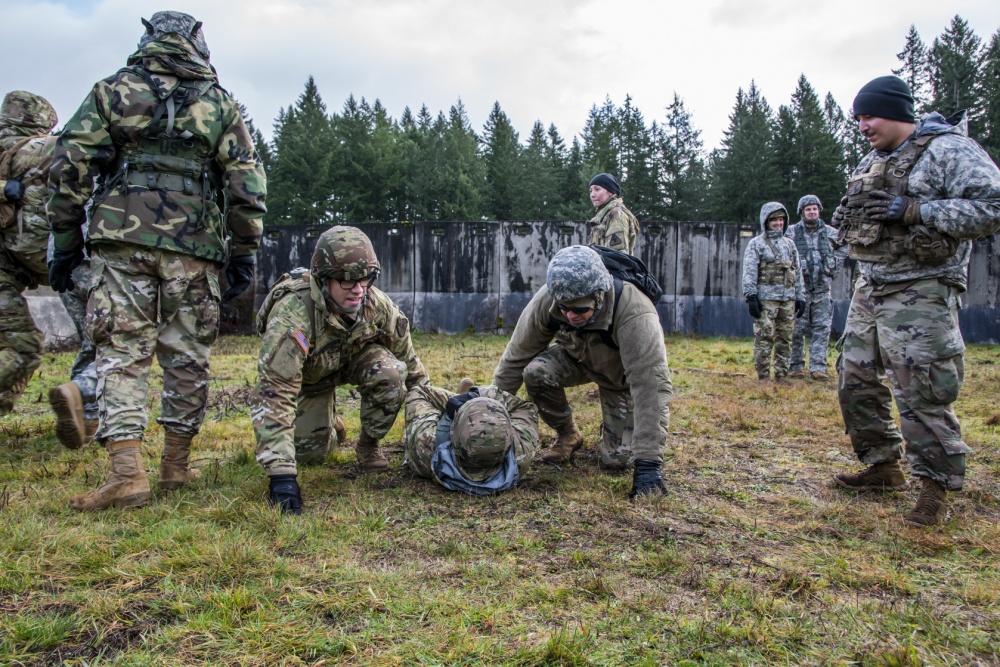Surveillance Snapshot: Illness and Injury Burdens, Reserve Component, U.S. Armed Forces, 2019
 Soldiers from each of the United States Army’s three components partnered together to conduct a training exercise at Joint Base Lewis-McChord, Washington, in January 2020. (U.S. Army Reserve photo by Capt. Gurney F. Pearsall III)
Soldiers from each of the United States Army’s three components partnered together to conduct a training exercise at Joint Base Lewis-McChord, Washington, in January 2020. (U.S. Army Reserve photo by Capt. Gurney F. Pearsall III)
5/1/2020
By:
Armed Forces Health Surveillance Branch Communications Team
You also may be interested in...
Article
Jun 1, 2024
Reportable Medical Events are documented in the Disease Reporting System internet by health care providers and public health officials throughout the Military Health System to monitor, control, and prevent the occurrence and spread of diseases of public health interest or readiness importance.
Article
Jun 1, 2024
This report documents the frequencies, rates, trends, and characteristics of ambulatory health care visits in 2023 of active component members of the U.S. Armed Forces in 2023.
Report
May 1, 2024
 .PDF |
3.55 MB
.PDF |
3.55 MB
The May 2024 MSMR features a report on mortality surveillance of active duty U.S. soldiers from 2014 to 2019; followed by three related reports on respiratory investigations, surveillance and forecasting, on: an outbreak of influenza and SARS-CoV-2 at the Armed Forces of the Philippines Health Service Education and Training Center, September–October ...
Article
May 1, 2024
This report presents the incidence of infections and genetic characteristics of influenza and SARS-CoV-2 among Military Health System beneficiaries during the 2021-2022 surveillance season.
Article
May 1, 2024
MSMR annually publishes an update on the incidence of malaria among U.S. service members.
Article
May 1, 2024
MSMR publishes a monthly reportable medical event update for the active component and Military Health System beneficiaries.
Article
May 1, 2024
This retrospective analysis describes active duty U.S. Army soldiers who died from 2014 to 2019, utilizing administrative data sources to calculate mortality rates, assess trends by category of death, and identify leading causes of death within subpopulations.
Article
May 1, 2024
This report describes an investigation of a respiratory outbreak at the Armed Forces of the Philippines Health Service Education and Training Center by the Walter Reed Army Institute of Research-Armed Forces Research Institute of Medical Sciences and Armed Forces of the Philippines Collaborative Molecular Laboratory, demonstrating a common source ...
Article
May 1, 2024
This report summarizes the results and lessons from the Armed Forces Health Surveillance Division Integrated Biosurveillance forecasts for the 2022-2023 respiratory illness forecasting season.
Report
Apr 1, 2024
 .PDF |
1.52 MB
.PDF |
1.52 MB
508-compliant PDF of MSMR Vol 31 No 4 April 2024
Article
Apr 1, 2024
This report summarizes heat stroke and heat exhaustion case counts, incidence rates, and locations among U.S. active component service members from 2019 through 2023.
Article
Apr 1, 2024
This report summarizes Military Heath System (MHS) data from 2019 through 2023 on the numbers, frequency, rates, trends, demographics, geographic locations, as well as military characteristics of exertional rhabdomyolysis among U.S. active component service members.
Article
Apr 1, 2024
This report provides a monthly updatea of Reportable Medical Events documented in the Disease Reporting System internet (DRSi) by health care providers and public health officials throughout the Military Health System. Reportable Medical Events are a critical tool for monitoring, controlling, and preventing the occurrence and spread of diseases of ...
Article
Apr 1, 2024
This report summarizes Military Heath System data from 2008 through 2023 on the numbers, frequency, rates, trends, demographics, geographic locations, as well as military characteristics of exertional hyponatremia among U.S. active component service members.
Article
Apr 1, 2024
Since 2001, MSMR has published regular reports on the incidence of heat illness among U.S. active component service members. This annual update presents summaries of heat stroke and heat exhaustion case counts, incidence rates, and locations from 2019 through 2023.
You are leaving Health.mil
The appearance of hyperlinks does not constitute endorsement by the Department of Defense of non-U.S. Government sites or the information, products, or services contained therein. Although the Defense Health Agency may or may not use these sites as additional distribution channels for Department of Defense information, it does not exercise editorial control over all of the information that you may find at these locations. Such links are provided consistent with the stated purpose of this website.
You are leaving Health.mil
View the external links disclaimer.
Last Updated: July 11, 2023